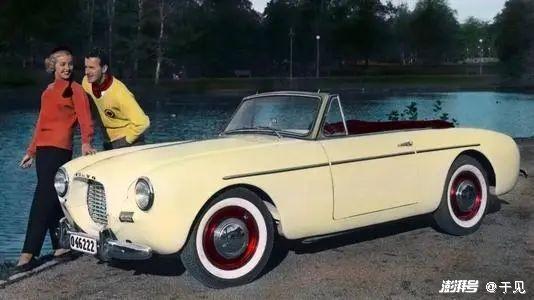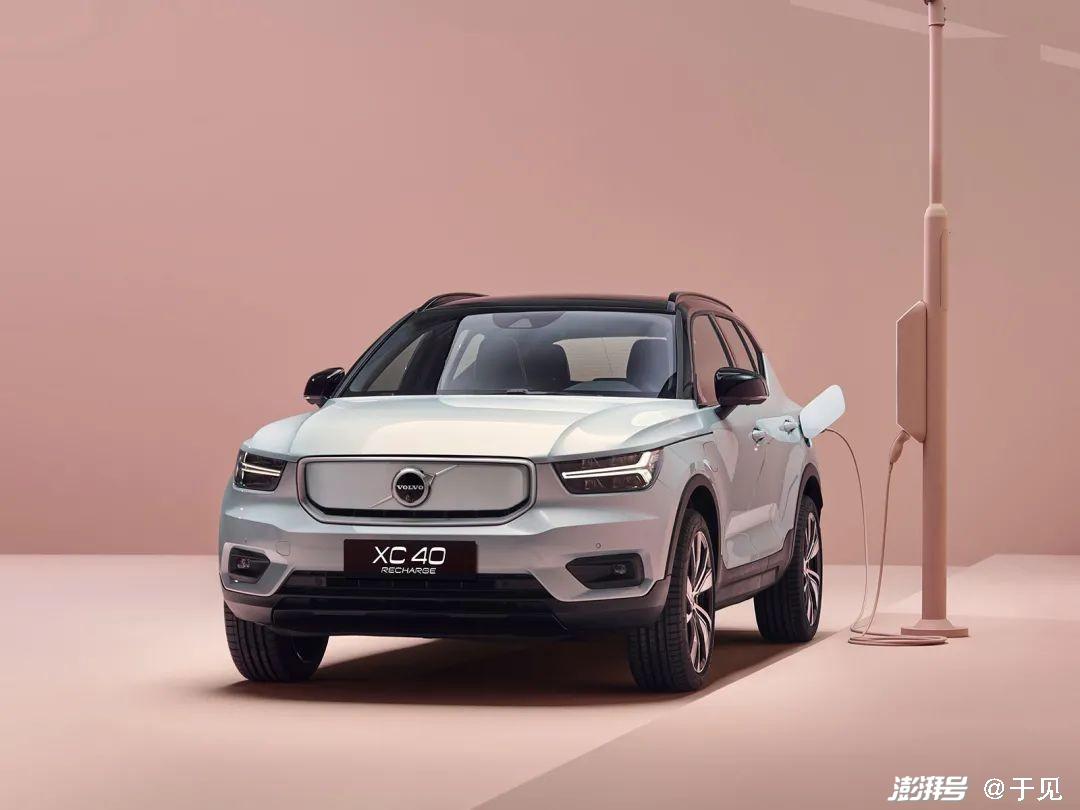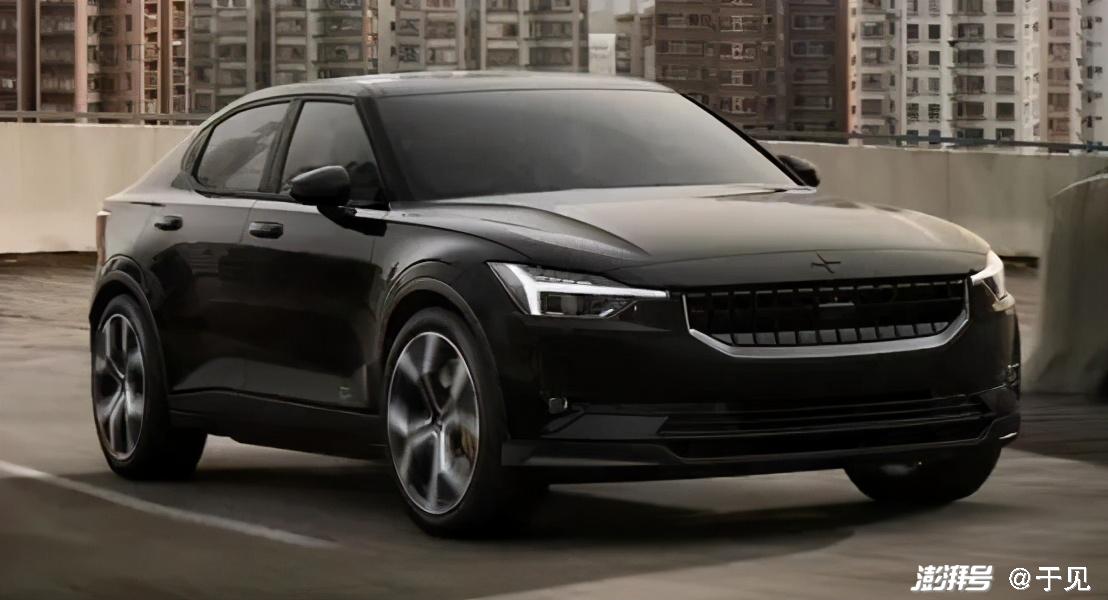A century-old Volvo will finally be listed in Geely’s hands.
Edit | Paul Yu Pin
Produced by Chaoqi. com "See the column"
As a global automobile safety benchmark, Volvo’s story began in Gothenburg, Sweden in 1927.
There, Volvo launched its first mass production model OV4, but it was ignored by the market because of its convertible structure design, which failed to take into account the local situation in Sweden.
It was not until the second model, the hard-top car PV4, was introduced that it was turned over by selling 694 cars in two years.
What put Volvo on the right track was the six-cylinder engine model PV651 launched in 1929. After the acquisition of Pentaverken Engine Company in 1935, Volvo was officially listed on the Swedish Stock Exchange.
Ford Motor Company was acquired in 1999 at a cost of US$ 6.45 billion. Later, due to the financial crisis in 2008, it was deeply mired in operating losses and had to sell its brand assets. Among them, Volvo Car was sold to Geely Automobile at a cost of US$ 1.8 billion in 2010, which was more than 70% lower than the original purchase price of US$ 6.45 billion. Ford is an old enemy in Volvo’s development history.

Geely and Volvo’s Ten Years’ Road
March 28th, 2020 is the 10th anniversary of Geely’s acquisition of Volvo, which is why when people talk about Volvo cars, they will mention Geely’s reasons.
Geely’s acquisition of Volvo in that year was enough to be called a snake swallowing an elephant drama. Li Shufu’s desperate saburo mentality made Volvo survive, especially in the second-tier luxury car camp in China market.
By 2018, the sales volume will reach 130,000 vehicles, the global sales volume will exceed 640,000 vehicles, and the brand value will soar from the original $1.8 billion to $18 billion, with a year-on-year increase of over 100%.
Since Geely acquired Volvo in 2010, thanks to the convenience Geely brought to Volvo in terms of channels and production capacity, the sales of Volvo cars in China and around the world have also increased year after year. Since Geely acquired Volvo, Volvo’s annual sales have risen sharply for six consecutive years.
Achieving profitability is just a starter. The highlight is that in 2019, global sales exceeded 700,000 vehicles, with a cumulative sales of 705,400 vehicles. Breaking the highest sales record since 1993, it can be said that Geely is a great benefactor on the road of Volvo’s revival.
Relying on the advantage of Geely’s localization in China, Volvo and Geely also jointly launched a new brand, Lexus, to enter the domestic high-end market. In 2018, the brand sold more than 120,000 vehicles, which almost tied Volvo’s annual sales, and made Great Wall WEY a loser, and established a reputation in the high-end market of domestic cars.
In the past ten years, the sales volume of Volvo cars has increased from 334,800 to 662,000 in 2020, and the China market has become the largest single market for Volvo.
Cars equipped with internal combustion engines have no future.
"Cars equipped with internal combustion engines have no future."
Volvo is full of longing for the future of electric vehicles, and even plans to completely eliminate all internal combustion engine automobile products including hybrid vehicles in 2030. This means that after 10 years, Volvo will bid farewell to fuel vehicles and become a pure electric brand completely.
However, with the current situation of Volvo’s electrification development, it is still far from such a radical plan.
The debut of Volvo’s first pure electric vehicle is long overdue, and the sales volume of electric vehicle brand Polar Star, which was born out of Volvo’s high-performance department specializing in electrification, is also a long story.
Farewell to the fuel truck completely after 10 years, which is quite a bit "desperate". But beyond that, Volvo seems to have no choice.

Volvo wants to rely on two wings when transforming to electrification, one is to rely on Polaris, and the other is to rely on its own hybrid car.
However, nowadays, the development of Polaris is far from optimistic, and hybrid cars are not up to expectations.
In 2017, Volvo’s department specializing in electrification and high performance was separated from Volvo and named Polar Star, officially becoming a brand new and independent electric vehicle brand.
The original intention of separating Polar Star is that Volvo hopes to change its traditional car image by the east wind of new energy, build a new brand with brand-new labels, develop in the direction of high-performance electric vehicles, and compete with Tesla.
Unfortunately, Volvo, which tried to fly with two wings, failed to fly.
Polar Star did not fulfill the dream of Volvo’s high-performance electric vehicle brand as expected. In 2020, the cumulative insurance amount of Polar Star was only 365 vehicles.
In terms of products, the brand positioning of Polar Star and Volvo is one of the major reasons for the poor sales performance of Polar Star.
Polar Star 1 can see the shadow of Volvo S90. The almost identical interior, central control panel and Raytheon’s hammer headlights make people feel that they bought a Volvo for 1.45 million yuan. The design of Polar Star 2 and Volvo 40.2 concept car cannot be said to be very similar, but can only be said to be exactly the same.
The core selling point of Polar Star, which goes out independently, is still the characteristics of environmental protection and performance, which is very similar to Volvo. As long as Volvo introduces pure electric vehicles, it will definitely collide with its own hatched polar star, and its own electric vehicle business coincides with its electric vehicle business, which is not conducive to the development of polar star.
On the other hand, Volvo’s funding for Polar Star is not generous, which makes Polar Star slow in terms of factory construction and retail network construction. This is also reflected in Volvo’s financial report.
According to the financial report, the loss of Polar Star reached 520 million Swedish kronor (about 380 million yuan) in 2018. Perhaps in order to improve cash flow, it was recently reported that Polar Star is promoting financing and will issue an IPO in the future.
Thomas Ingrat, CEO of Polar Star Brand, also confirmed that the goal of Polar Star’s medium and long-term development is very clear, which is to open the door to IPO and stock market.

Get an electric shock before Tesla
But in fact, Volvo is the earliest luxury brand that "gets an electric shock".
As early as 1992, Volvo launched the ECC model, started the exploration of electrification, and launched the ECC model. This car uses gas turbine+electric drive, not only that, but also the whole car is made of recyclable materials.
In 2007, when Europe scoffed at the electrification of automobiles, it was Volvo that released C30 Electric and stood up for electric vehicles. The car is equipped with "DRIVE" powertrain technology, adopts a mid-range battery pack, and has a cruising range of 150km. It takes only 8 hours to fully charge the household charging pile.
At that time, Tesla was only established for more than three years, and its first automobile product Roadster was not released.
Volvo is also the first traditional car company to stand up and specify the time to stop production of traditional fuel vehicles. In July 2017, Volvo announced that it would stop production of fuel vehicles after 2019.
However, all Volvo did was pay lip service. After the timetable of "stopping production of fuel vehicles" was put forward, Volvo’s electric vehicle project did not speed up. It was not until October 2019 that Volvo launched the first pure electric vehicle XC40 RECHARGE.
At the same time, other new energy car companies have accelerated their pace.
In 2017, Tesla set up a branch in China, which achieved sales of more than 20,000 electric vehicles that year. In 2018, Audi e-tron made its debut in China. Soon after, Mercedes-Benz EQC appeared in China.
Volvo’s XC40 RECHARGE is not only a late debut, but also an "oil-to-electricity" model, which is based on the Volvo XC40 fuel version. The product of "oil to electricity" has shortcomings such as short battery life, slow charging, unstable chassis and poor handling since its birth.
In 2020, Volvo XC40 RECHARGE sold only 87 vehicles; In January 2021, its sales volume was 51 vehicles.
Difficult IPO
At present, Geely is considering restarting its subsidiary Volvo’s IPO plan, and Volvo’s valuation may be around 20 billion US dollars.
Geely Holding will negotiate Volvo’s IPO as soon as this year, and consider potential listing sites including Stockholm and Amsterdam.
At present, IPO preparation is still in its infancy, and details such as potential valuation may change. Volvo Cars will also judge various IPO schemes, and if necessary, it will make regulatory disclosure at an appropriate time.
Previously, Geely Holding prepared for the IPO of Volvo Cars in 2018, but investors were hesitant about its valuation of up to 30 billion US dollars, and then Volvo’s listing went nowhere.
It is difficult to go public not only because the valuation is too high, but because Volvo is not worth the valuation.
As we all know, Volvo has got a hard hand in price reduction. The sharp price reduction has temporarily brought about an increase in Volvo’s sales, but it has greatly reduced its brand power and lowered its brand image.
Volvo’s technology has been continuously delegated to Geely, which will undoubtedly greatly reduce its brand image.
Price reduction and technology decentralization have undoubtedly made Volvo lose the dignity and value of luxury brands.
At the same time, it has greatly reduced consumers’ confidence in this brand. With the decline of brand power and consumer confidence, Volvo’s sales growth rate has slowed down significantly.
In terms of product quality, Volvo has also begun to decline.
Although Volvo has always advertised its own safety, frequent quality problems and many large-scale vehicle recalls have torn the label of Volvo’s "safety" completely.
In 2020 alone, Volvo recalled four times, involving more than 530,000 vehicles. Moreover, the number of vehicles recalled due to hidden dangers in seat belts is as high as 245,000.
As the inventor of three-point seat belts, Volvo finally stumbled in its own field, which forced people to re-examine Volvo.
The "low frequency resonance" problem of Volvo’s main sales models has also caused its reputation to decline.
Of course, the manufacturer has not come up with an effective solution, and this problem still plagues many Volvo car owners for a long time. Such quality makes it difficult to link Volvo with the "safety" label again.
As the brand image goes from bad to worse, the brand power is greatly reduced and quality problems appear frequently, Volvo’s future road becomes more and more difficult.
With the intensification of competition, even if Volvo goes public smoothly in the future, it will worry about the stock price.